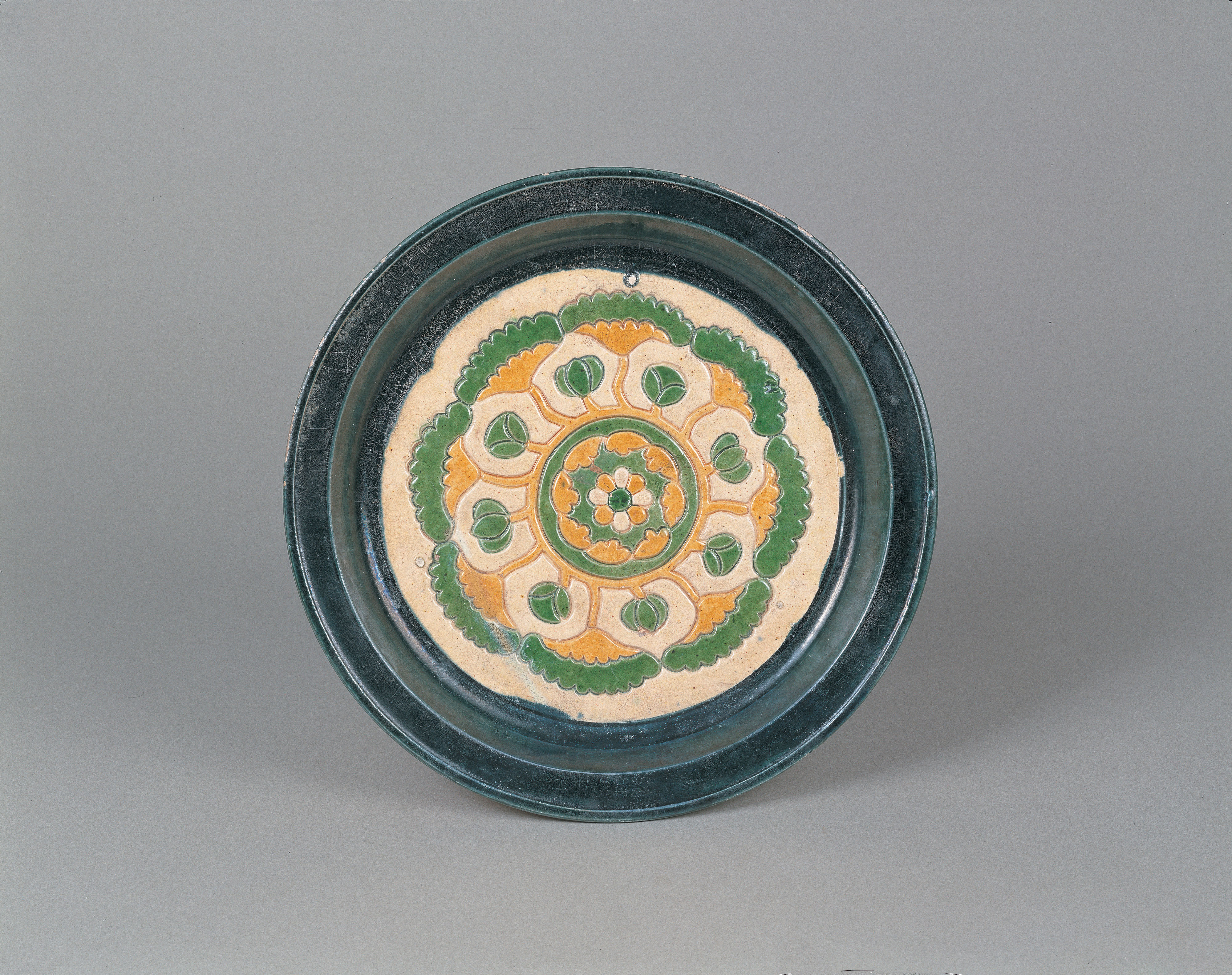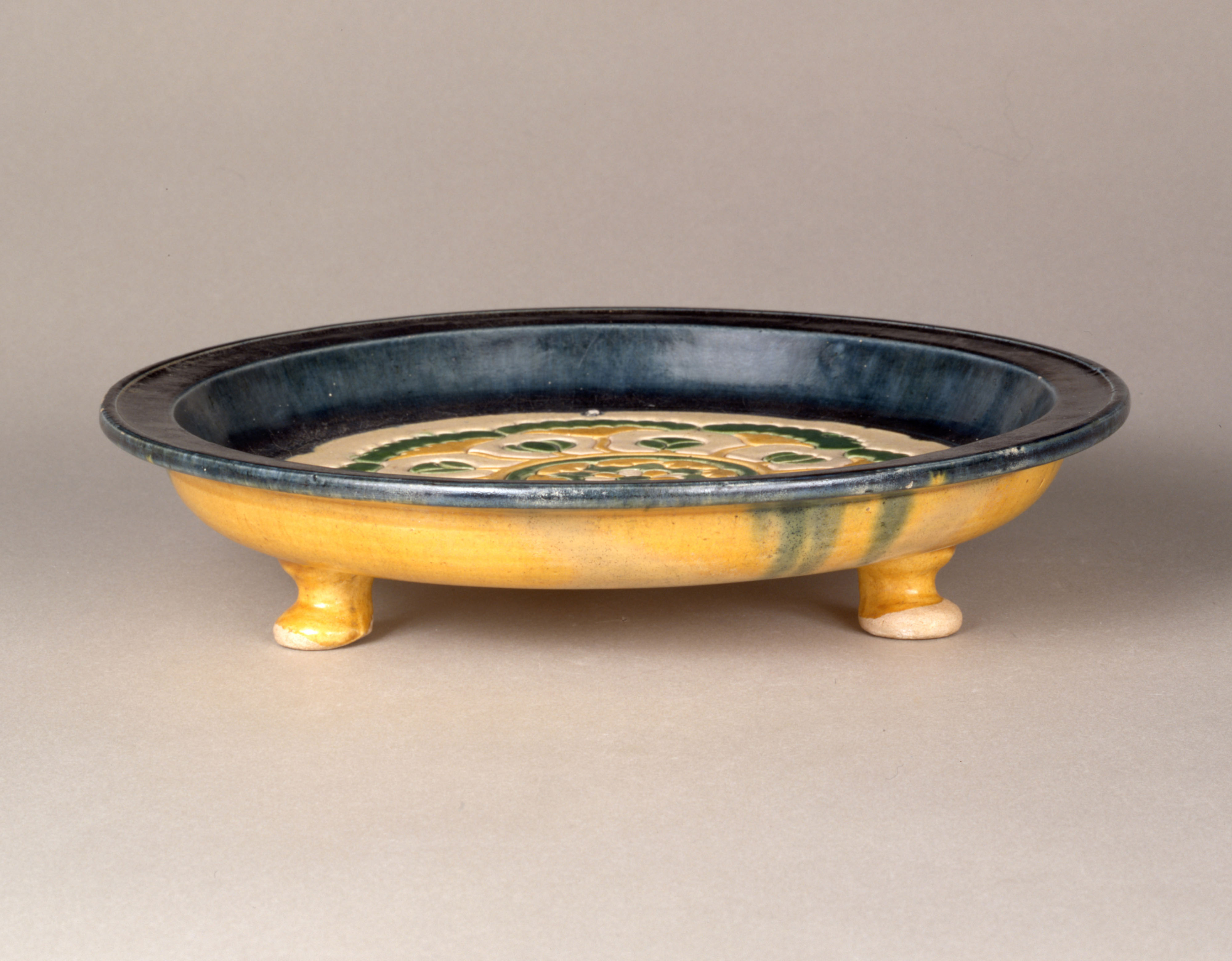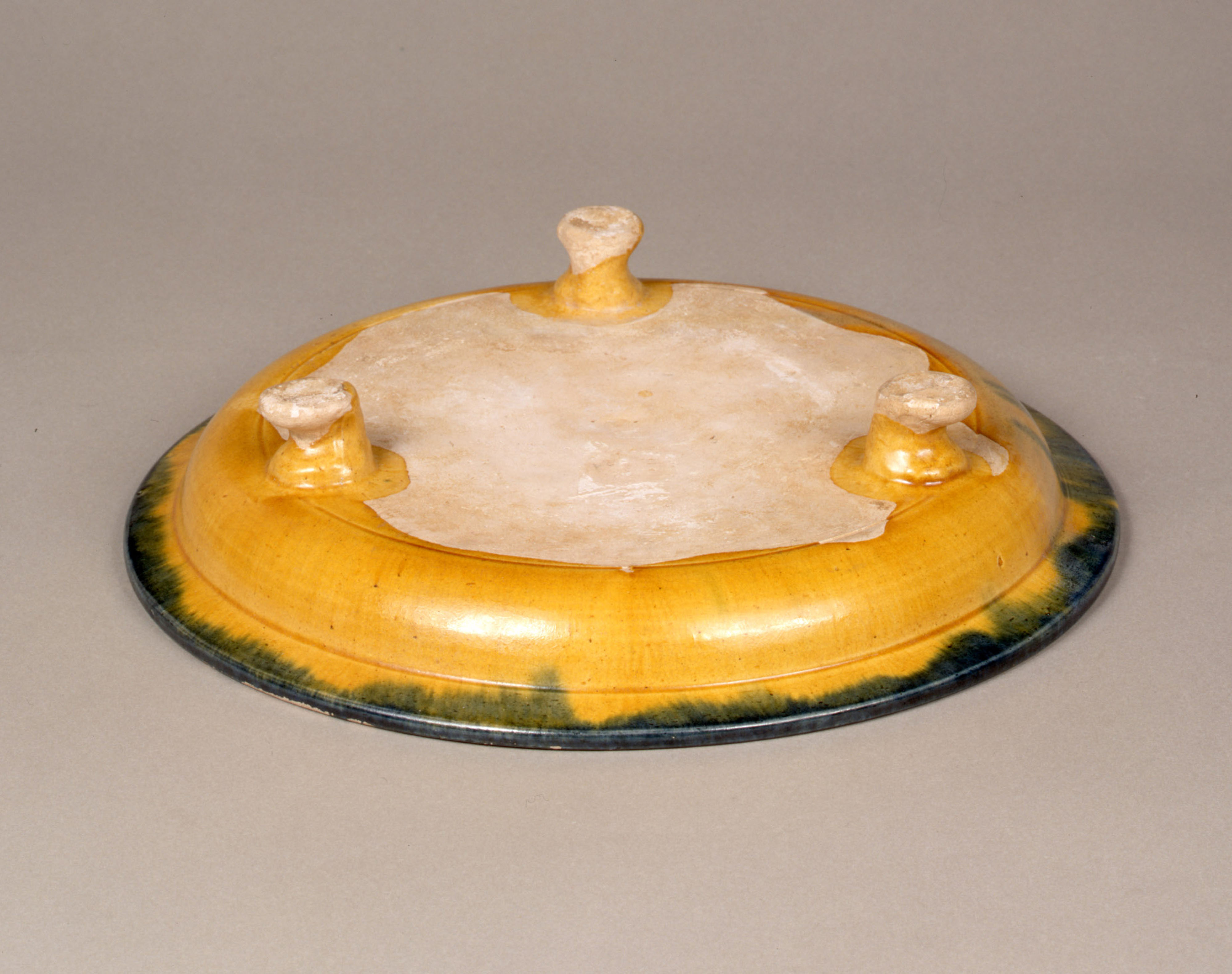
らんさんさいほうそうげもんさんそくばん 藍三彩宝相華文三足盤
8世紀(唐)
唐三彩とは唐時代(618年~907年)の特に7世紀後半から8世紀前半に作られたやきものです。主に白色、緑色、褐色(黄色)の三色で彩色されています。本作のように藍色を用いたものは藍三彩と呼ばれます。「明器」と呼ばれる、唐時代に貴族の墓に死者とともに埋葬された副葬品として作られました。現在までに河南省、河北省、陝西省などが産地とされています。
平たい器である盤は、唐三彩の中でも多く発見されている器種です。内面には箆(へら)で宝相華(仏教美術などにもみられる架空の花。縁起の良い文様)を深く彫り込み、その上から着色されています。文様は丁寧かつ精細に着色されており、当時、完成度の高い唐三彩が安定して生産されていたことが分かります。
| 寸法 | 高6.3cm 口径29.2cm |
|---|---|
| 制作地 | 生産地域:中国 |
| 寄贈者名 | 浦上敏朗 |

Tripod dish with a design of baoxiang-hua flower motifs, Tang sancai (tricolor-glazed) ware
8th century
Tang sancai or tricolor-glazed ware was produced during the Tang dynasty (618 – 907) in China,especially during the period from the second half of the 7th century to the first half of the 8th century. It generally features three colors: white, green and brown (or yellow). Tang sancai ware resembling this piece, but including indigo blue (ran) in their color scheme are called ran (indigo) sancai. Tang sancai ware was usually created as funeral accessories called mingqi (spirit objects), which were buried during the Tang dynasty with the deceased person in the tombs of noble personages. It is believed that Tang sancai ware was chiefly produced in Henan, Hebei and Shanxi provinces. Among the Tang sancai ware unearthed, dishes for serving food were the type of vessel found in the greatest quantities. The inner surface of this vessel is decorated with motifs of the baoxiang-hua flower (a fanciful flower often depicted in Buddhist art). Patterns using this type of flower are said to bring good luck. The decoration was carved deep into the clay, using a spatula, and then it was colored. The carved patterns we see here are colored precisely and with scrupulous detail, suggesting that Tang sancai ware with a high degree of perfection was produced in large numbers.
| Donor Name | Uragami Toshiro |
|---|

藍三彩寶相華文三足盤
唐三彩是唐朝(618年~ 907年),特別是7世紀後半期到8世紀前半期燒製的陶瓷器。主要用白色、綠色、褐色(黃色)三種顏色著色。像此盤一樣帶有藍色的物件,在日本被稱為藍三彩。唐朝,在貴族的墓葬中被稱為“明器”,作為死者的陪葬品而被燒製的。目前為止,產地在河南省,河北省,陝西省等地。
扁平器皿的盤子,是唐三彩中發現較多的器種。在盤心,用竹篦深刻的寶相華(佛教美術中常見的虛構的花。吉利紋樣),並在上麵著色。紋樣被仔細而精細地著色,可見當時,能穩定生產高等工藝的唐三彩。
| 捐贈者 | 浦上敏朗 |
|---|

남삼채 보상화문 삼족 반
당삼채는 당나라 시대(618년~907년) 때, 특히 7세기 후반에서 8세기 전반의 시기에 만들어진 도자기입니다. 주로 흰색, 녹색, 갈색 또는 노란색의 삼색으로 채색되어 있는데, 본 작품처럼 남색을 이용한 것을 남삼채라고 부릅니다. 이는 <명기(明器)> 즉, 당나라 귀족의 묘에 사체와 함께 껴묻거리로 매장되는 부장품으로서 만들어졌습니다. 현재까지는 허난성, 허베이성, 산시성 등이 산지로 알려져 있습니다.
평평한 그릇인 반(盤)은, 당삼채 중에서도 많이 발견되는 모양입니다. 안쪽에는 긁개로 보상화(불교미술 등에서도 볼 수 있는 가공의 꽃. 길운에 좋은 문양)를 깊게 새겨 넣었고, 그 위에 색을 입혔습니다. 정교하면서도 섬세하게 색이 입혀져 있는데, 이는 당시에 완성도 높은 당삼채가 안정적으로 생산되었던 것을 보여줍니다.
| 기증자명 | 우라가미 토시로 |
|---|


